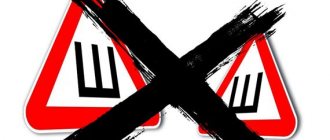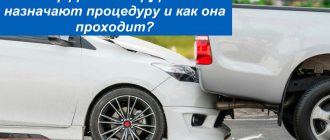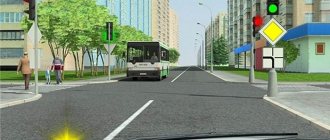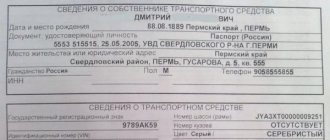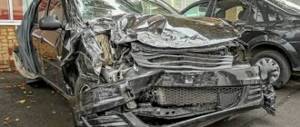It is probably difficult to convey in words the emotions that arise when buying a brand new car. But as the years go by, the once new car gradually becomes obsolete, eventually turning into a pile of scrap metal. And to prevent this from happening, you need to promptly replace the outdated model with a new one. This is why there is a trade-in program.
Similar services have long been used in European countries. Their essence is simple: a citizen brings his old car to a car dealership and receives a discount on the purchase of a new one. Recently, such an opportunity has appeared in the Russian Federation. And every year the number of fans of the trade-in service is growing steadily.
Who is this service for?
Trade-in is suitable for all motorists who would like to become the owner of a brand new car. The following people most often use this program:
- those citizens who do not want to sell a car themselves;
- those who like to change their vehicle frequently;
- owners of expensive cars who find it difficult to find buyers on their own;
- motorists who show loyalty to a certain brand of car.
By making such exchanges, car dealerships are not engaged in charity. Used cars are offered for sale. For this reason, such machines must meet certain requirements. Therefore, it will not be possible to hand over a vehicle that is in poor cosmetic and technical condition to a car dealership. The same goes for very old cars.
Which cars are eligible to participate in the program?
Requirements for cars participating in the exchange depend on the specific car dealership. For example, some companies only accept cars of a certain brand. Others may be limited only by the year of manufacture and the technical condition of the car.
Nevertheless, there is a general list of requirements that a vehicle participating in the trade-in program must meet. Let's look at them in more detail:
- no external damage;
- age no more than 10 years;
- good technical condition.
Car dealerships are more willing to accept cars that are in demand among buyers. The main goal of the car dealership is to make sales on favorable terms. Therefore, it will be difficult to sell a car that is not in demand on the Russian market under the trade-in program.
How is the cost of a trade-in calculated?
When accepting a car, they first inspect it externally, “punch” it through the traffic police and display the approximate cost. The price depends on the condition of the car and the average price tag on the market. The average price tag should be displayed like this: the manager goes to the bulletin board, sets the criteria - year, engine, gearbox, creates a selection of several pages and, adding the prices and dividing them by the number of selected cars, calculates the average cost.
In fact, sellers only take ads from the first page, and the difference can be significant. That is, in the middle of the market, a car, for example, costs 600 thousand rubles, but they will tell you - 400, and even from this price they will calculate a reduction in cost, the size of which depends on the year of manufacture, condition of the car, mileage, number of owners and other parameters .
Showrooms reduce prices least of all on budget cars.
— On budget cars like Polo and Solaris, the year and mileage influence the cost reduction the most. Such cars sell quickly, the risks are minimal, so we reduce little on them,” says trade-in department manager Evgeniy Chirkov. — For premium cars, we take into account the equipment and engine. There is already a big reduction in cost on them. The risks here are high, and cars take longer to sell. It happens that they go into negative territory altogether. We recently sold a GLK that had been sitting for almost a year. Initially they gave a lot to the client, but in the end they lost 200 thousand rubles.
Also read: Three problems that make it time to sell your car
Car reception
The car acceptance process consists of the following steps:
- After the car is brought to the dealership, it is examined by an expert.
- Based on the results of checking the technical condition of the car, a protocol is drawn up.
- A final assessment of the vehicle is carried out, during which its final cost is determined.
- If the owner agrees to carry out the transaction on the agreed terms, the parties enter into an agreement.
The seller should not deregister the car at this time. The re-registration process is carried out by the buyer. Therefore, after concluding the contract, the car owner hands over the car keys to the salon employee. Together with them, he must give PTS and STS.
It is not required to provide a service book, which contains information about the technical condition of the machine. Nevertheless, it is better for the motorist to take it with him. This is especially important if the car is under warranty.
It is not necessary to provide title papers (donation agreement, purchase and sale agreement) when exchanging a car.
Vehicle assessment
Car dealership employees are interested in buying a car at a reduced price. In this case, they will be able to earn more money through the subsequent resale of the car. Therefore, even the slightest visual defects will be used to reduce the price as much as possible. The same applies to machine malfunctions.
Car tuning is not considered an advantage when evaluating a car. Employees are more willing to accept a car with factory equipment. The cost of a tuned car will be reduced.
What it is
Now almost every car dealership claims that you can purchase a car from them using the Trade-In system.
Its meaning is to exchange old cars for new ones. Domestic motorists have no problems understanding the essence of this program. In fact, you give away your current used car, and at the same time receive a certain amount of discount on the purchase of a new car. The size of this discount is equal to the amount at which the dealership valued your vehicle.
Everything seems extremely simple, clear and profitable. But in practice, the state program for such an exchange, which actually has state support, is not so transparent. In many ways, the fault lies with the showrooms that evaluate the old car and, based on the size of the assessment, give a certain discount on a new car that the buyer likes.
To put it briefly and in general terms, the client arrives at the salon in an old car and leaves from there in a new one. In just a few hours spent at the car dealership, all legal aspects are resolved in order to legally part with the previous vehicle.
It is important to emphasize that Trade-In sells new and used cars that are available at the car dealership you contacted. Although in the second case this can no longer be considered a full-fledged Trade-In system. Initially, this program was conceived as a tool to stimulate the purchase of new cars. That is, the exchange of used for used does not fall under the criteria of the classic Trade-In.
There are two main sales schemes using the Trade-In system:
- First scheme. It is the most common. In this case, a DCT is concluded, that is, a purchase and sale agreement for a used car between the owner and the car dealership. After this, the purchase of a new car is processed separately, part of the cost of which is covered by the proceeds from the used car.
- Second scheme. This is a commission agreement. Its meaning is that the car owner transfers the car to the salon for subsequent sale. Here the car dealership acts as an intermediary who undertakes obligations to sell the vehicle. For this, the owner pays a certain reward.
Some salons operate only according to the second scheme. They offer to put your car up for sale, and only after it has been sold they offer to purchase a new vehicle, including the proceeds in the deal. Or just transfer the money. But organizations are more interested in the client selling his car through them, and then buying a new one from them. Sometimes this becomes a prerequisite for the deal.
Objectively, the second scheme is less attractive. It is better to contact those organizations that are ready to immediately buy the vehicle and sign the contract. But the decision is up to the client.
How to complete a deal faster
A motorist can speed up the car exchange procedure. To do this, he should adhere to the following recommendations:
- We will find out the price of the car in advance. The easiest way to do this is to look at advertisements for the sale of similar cars on the Internet. This approach will save the owner from empty disputes with the car dealer.
- We offer the car to the dealership where it was purchased. In this case, the procedure for checking the car is accelerated, because it will be easier for the car dealership employees to track the car’s service history and determine its value. You can offer the car to other dealers. The main thing is that they sell vehicles of this brand. Otherwise, they may offer a frankly low price for the car.
- Minor repairs should not be made before selling. Such actions are just a waste of time and money.
- It is easier to trade-in a car that has been serviced in a timely manner by an authorized dealer. Typically, dealerships offer large sums for such cars.
Benefits of using a trade-in program
Today, this program is only gaining popularity in the Russian Federation. However, many motorists have already appreciated its advantages.
Let's look at the main advantages of the service:
- The transaction is completed without risks, because the official dealer is a legal entity.
- Saving time, since the motorist will not have to look for buyers for his old car.
- Fast paperwork. You can get behind the wheel of a new car on the same day.
- The car dealership does not make any claims to the client after the transaction is concluded. If any defects were not found during the initial inspection, this is a problem for the dealer’s employees.
- Using the trade-in service, a citizen can exchange a car for a used car.
- Some car dealerships offer their customers the purchase of new cars on credit or in installments.
How can I get a new one from the dealership for an old car?
The times when a car was a huge luxury and purchased only once in a lifetime are long gone. Quite recently, there was a shortage of this category of goods, there were queues, and the cost of such an acquisition was extremely high. Currently, the car market is so huge and diverse that car owners change their vehicle as many times as they want.
Is it possible to do this?
The newest government program Trade-In, which appeared in 2021, allows you to exchange an old car for a new one at a car dealership . Naturally, the money for an old car will be much less than when buying it. But in a matter of hours, the client can get behind the wheel of a new car, chosen at a car dealership.
Since not all car dealerships practice the Trade-In program, to exchange an old car for a new one, the client should choose a car dealer who has this system. Currently, the Trade-In program is available in most in 2-3 hours.
Car dealership employees check the condition of the car and documents for compliance with technical specifications. Thus, the problem of finding buyers shifts to the dealer.
Note! Clients participating in Trade-In cannot make additional payments. To purchase a new car under this program, you must pay the full amount of money at the time of transaction.
Participation in the state Trade-In program allows you to significantly reduce the risks when purchasing a car. All vehicles offered for sale are not reported stolen and are thoroughly diagnosed.
Due to the fact that the car dealer runs the risk of selling this car not on schedule, the calculation of the new car includes an amount taking into account the company’s possible risks.
Participation in the Trade-In program
The rules by which an old car is exchanged for a new one are established by the owners of car dealerships. It is worth noting that they should not contradict current Russian legislation. Due to the fact that competition plays a key role in the car market, the requirements of almost all dealers are identical. However, conditions may vary in one way or another depending on the year of manufacture of the car, make, and mileage.
However, there are recommended requirements set by all car companies:
- satisfactory condition of the vehicle, good technical characteristics;
- absence of visible mechanical damage, marketable appearance;
- service life no more than 10 years;
- The car brand is popular and is also in significant demand among consumers.
Note! Cases of refusal are common when company employees are sure that they will definitely not receive benefits from the sale of a given car. In this case, either a bargain price for the car will be offered, or acceptance will be refused.
Recycling program
The state car recycling program was launched in 2010 with the entry into force of Decree of the Government of the Russian Federation of December 31, 2009 No. 1194. The program is focused on increasing sales of domestic cars by providing subsidies for the purchase of new vehicles to replace old ones.
All vehicles are eligible to participate in the recycling program. In this case, mileage, technical condition, make and model, country of assembly do not matter. The age of the vehicle is not limited.
Manufacturers of domestic and foreign cars work in the car recycling program:
- Lada (compensation for the purchase of any model - 50,000 rubles);
- UAZ (Patriot and Hunter - 90,000 rubles, Pickup and Cargo - 120,000 rubles);
- GAZ (commercial vehicle - 175,000 rubles, truck - 350,000 rubles);
- Opel (Meriva, Corsa, Insignia - 40,000 rubles, Astra - 80,000 rubles, Mokka - 100,000 rubles, Antara - 140,000 rubles);
- Peugeot (Boxer, 408 and 4008 - 50,000 rubles);
- Renault (Logan, Sandero - 25,000 rubles, Duster, Fluence and Koleos - 50,000 rubles);
- Hyundai (Solaris, Creta - RUB 50,000);
- Nissan (Terrano - 50,000 rubles, Almera - 60,000 rubles, Teana - 100,000 rubles);
- Skoda (Fabia - 60,000 rubles; Rapid - 80,000 rubles, Octavia, Yeti - 90,000 rubles);
- Volkswagen (Jetta, Polo - 50,000 rubles);
- Citroen (C4 - 50,000 rubles);
- Mitsubishi (Outlander - 40,000 rubles, Pajero Sport - 75,000 rubles);
- Ford (Focus, S-Max, Galaxy, Mondeo - 50,000 rubles, Kuga AWD, Ecosport AWD - 90,000 rubles).
The client can exchange an old car under the recycling program for any new one from the list above.
Note! The amount of compensation and the vehicle involved in the transaction in some cases differ. Therefore, the conditions for disposal of certain car brands should be clarified with the car dealer.
Benefits of buying a used car
By purchasing a used car through the trade-in program, a citizen will receive the following benefits:
- The salon provides a guarantee not only for new, but also for used cars.
- Unlike buying a car second-hand, a transaction with a car dealership is absolutely safe.
- When putting a car up for sale, the dealer carefully checks it for any technical problems. Therefore, subsequently the buyer will be deprived of unpleasant surprises.
- The transaction is carried out quickly and without unnecessary hassle.
Should I trade-in or sell it myself?
According to statistics, most cars go to a new buyer within a month. Trade-ins are used by those who want to sell their car quickly and without hassle. It eliminates calls, communication with unpleasant people, and unnecessary meetings. But I still recommend starting with independent sales. This way you will test the market, find out if there is interest in your car, and come to the dealer already savvy: you will have arguments for bargaining if the car dealership prices the car unfairly. But you can and even need to bargain! Managers almost always leave a reserve, and if the client is dissatisfied, they increase the cost of the appointment.
It’s difficult to give clear advice—trade-in the car or sell it yourself. Calculate all the options: it can be profitable either way. Much depends on the discount, the specific salon, the car and, of course, on your patience. When submitting a trade-in, contact trusted dealers and carefully read the documents.
Author: Igor Vasiliev
Have you had any experience of giving a car a trade-in? How did everything go? Tell your story in the comments.
What motorists should know
To exchange a car on more favorable terms, a citizen should listen to the following advice:
- You should not skimp on maintaining your car. All diagnostic reports, work orders and service records should be collected. It is advisable to have your car serviced by an authorized dealer.
- If the car has minor defects, it is recommended to eliminate them before arriving at the dealership. We are talking about oil leaks, burnt out light bulbs, problems with the audio system or climate control, non-functioning buttons, etc. But you should not spend money on dry cleaning and consumables, since the car dealership employees will still carry out pre-sale preparation of the car.
- You should not agree to the terms of the first dealer. It is better to evaluate the vehicle in several showrooms. Most likely, one of them will offer the motorist a deal on more favorable terms.
If a citizen buys a used car, it is advisable for him to pay attention to the following circumstances:
- Car inspection. We pay attention to those parts that are subject to the greatest wear. We are talking about the sides of the driver's seat, the rim of the steering wheel, the gas pedal pad, etc.
- Study of PTS. The information specified in the car's passport must match the data provided by the salon employees.

